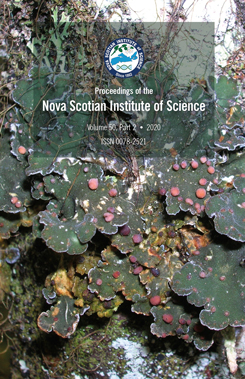Evaluating out-planting success and mycorrhizal status of endangered Geum peckii Pursh (Rosaceae), the Eastern Mountain Avens, in Nova Scotia
DOI:
https://doi.org/10.15273/pnsis.v50i2.10002Abstract
Geum peckii (Rosaceae), the Eastern Mountain Avens, is a small herbaceous plant that is listed as endangered federally and provincially. In Canada, this species is found in bogs on Brier Island and Harris Lake, Digby County, Nova Scotia. The only other population outside of Canada is in New Hampshire (USA). To enhance conservation research of this species, a seed sample from the native species seed bank at Acadia University was used to establish a plant tissue culture of G. peckii plants. Survival of out-planted material was then assessed in both the greenhouse and the field.
The field test site was within 20km of the existing plant populations in Digby County. Our study also revealed that G. peckii grows in association with arbuscular mycorrhizal fungi (AMF). During out-planting, plants received a mycorrhizal inoculum with the goal of enhancing survival. We used either a commercial mycorrhizal inoculum, or a native inoculum. Control plants were left untreated. Survival was 97-100 % among all the treatments by the end of the 2016 planting season. The results to date underscore the potential value of seed banking for protection of endangered native plant species. This study marks the first time in Nova Scotia that an endangered plant species has been successfully retrieved from seed bank storage, propagated by tissue culture, and out-planted back into a natural habitat.
Keywords: Conservation, endangered native species, Geum peckii, tissue culture propagation


